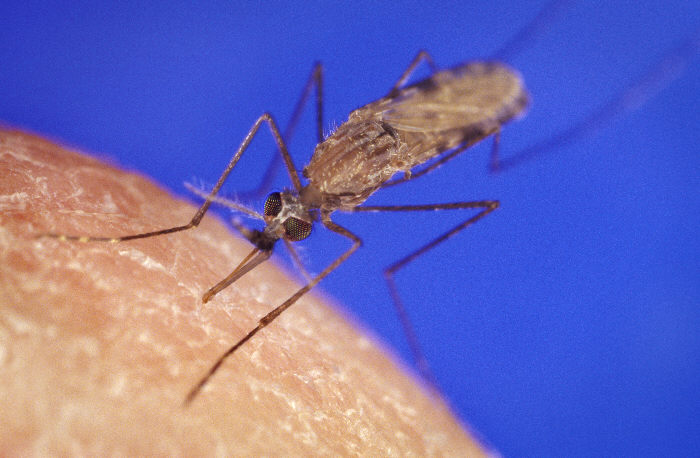Scientists have discovered the specific odour receptors used by the malaria-spreading mosquito species Anopheles gambiae to hunt down humans.
A paper in this week's Nature sets out an ingenious strategy  whereby a US-based team tested, one at a time, each of the 70-plus genes that encode mosquito odourant detectors in order to work out what chemicals each receptor could pick up.
whereby a US-based team tested, one at a time, each of the 70-plus genes that encode mosquito odourant detectors in order to work out what chemicals each receptor could pick up.
Yale researcher Allison Carey and her colleagues painstakingly inserted each gene in turn into a family of mutant fruit flies with a defective sense of smell. In these flies, known as the "drosophila empty neuron system", one of the nerves in their antennae lacks any of the olfactory receptors that are needed to detect odours.
Consequently, adding a mosquito receptor gene to this class of nerve endows the antennae of the recipient flies with the mosquito receptor, sensitising their antennae to any chemicals to which that receptor responded. And by studying just one gene at a time, the full spectrum of odours detected by that receptor could be identified.
To find out what odourants each responded to, the team recorded the electrical activity from the modified flies' antennae as they were exposed to more than 100 different consecutive smells, including chemicals known to be produced by humans and the bacteria that live on human skin.
The result was the discovery of 27 olfactory receptors that responded particularly strongly to components of human sweat.
Now, having mapped the "smell spectrum" detected by Anopheles mosquitoes and determined which receptors play the most important role in enabling the insects to home in on humans, the researchers are turning their attention to finding more effective repellents and trap-attractants.
"We're now screening for compounds that interact with these receptors," says co-author John Carlson. "Compounds that jam these receptors could impair the ability of mosquitoes to find us. Compounds that excite these receptors could help to lure mosquitoes into traps or repel them. The best lures or repellents may be cocktails of multiple compounds."










Comments
Add a comment